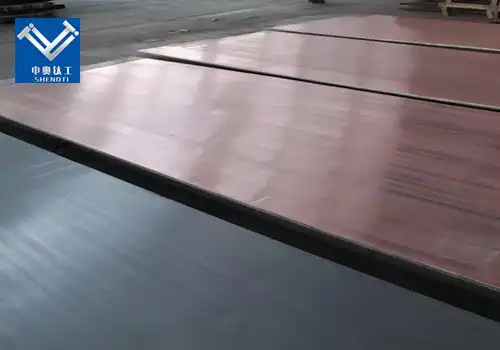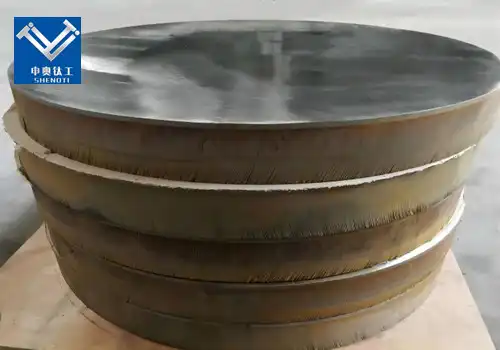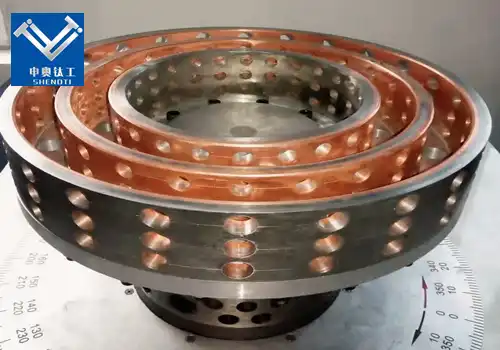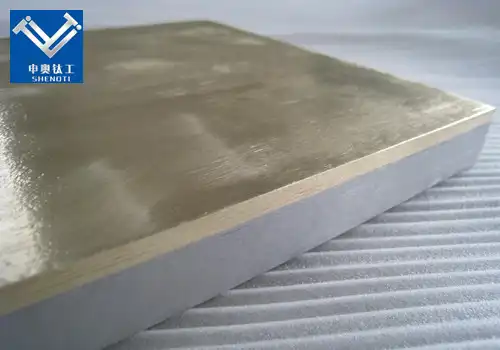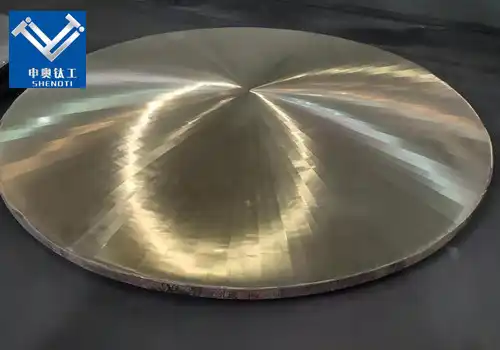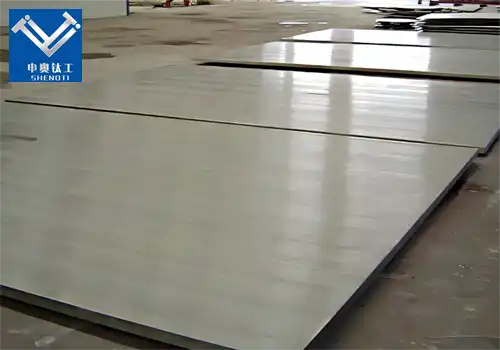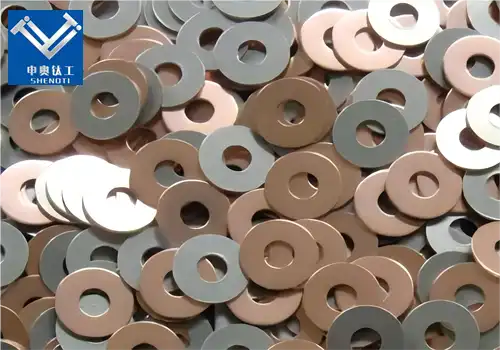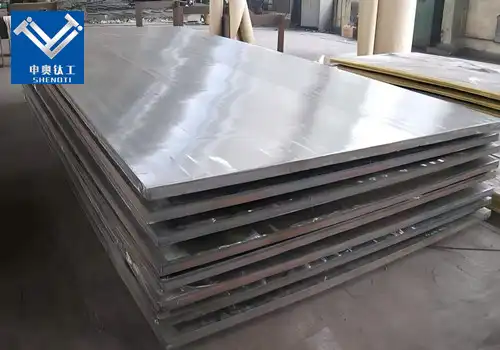
Key Benefits of Duplex Stainless Steel Composite Plate
2025-07-18 16:09:02
In today’s demanding industrial environment, material performance is everything. Duplex stainless steel composite plate has become a go-to solution across sectors like oil & gas, chemical processing, marine engineering, and power generation. Combining the mechanical strength of carbon steel or low alloy steel with the corrosion resistance of duplex stainless steel, this advanced material offers a powerful combination of performance and cost-efficiency.
Whether you're designing pressure vessels, heat exchangers, storage tanks, or offshore structures, duplex stainless steel composite plates provide unparalleled advantages in durability, corrosion resistance, and lifecycle cost savings.
What Is a Duplex Stainless Steel Composite Plate?
Definition and Structure
A duplex stainless steel composite plate is a bi-metallic material produced by bonding a layer of duplex stainless steel (such as 2205 or 2507) to a carbon steel or low alloy steel substrate. This composite design harnesses the strength, weldability, and affordability of the base material with the corrosion-resistant, high-strength properties of duplex stainless steel.
Why Duplex Stainless Steel?
Duplex stainless steel contains a mixed microstructure of austenite and ferrite, typically in a 50:50 ratio. This structure provides:
High strength (almost twice that of austenitic stainless steels)
Excellent resistance to pitting and crevice corrosion
Good stress corrosion cracking resistance
Better fatigue strength compared to other stainless steels
By combining it with a cost-effective backing steel, the resulting duplex stainless steel composite plate is ideal for large-scale industrial applications where both performance and budget matter.
Key Benefits of Duplex Stainless Steel Composite Plate
Superior Corrosion Resistance
Duplex stainless steel offers excellent corrosion resistance, especially in environments rich in chlorides or acidic compounds. This makes composite plates ideal for:
Seawater applications
Oil refining
Chemical processing
Desalination systems
Cost Savings Through Material Optimization
Solid duplex stainless steel is expensive. By using a duplex stainless steel composite plate, manufacturers only apply the stainless layer where corrosion resistance is needed, significantly reducing the overall cost.
Mechanical Strength and Weight Reduction
Duplex grades such as 2205 and 2507 have high yield strength, allowing for thinner plate usage while maintaining strength. This weight reduction leads to:
Lower material transport costs
Reduced structure load
Improved installation efficiency
Weldability and Fabrication
Modern production methods such as explosion bonding, hot rolling, or clad welding ensure strong metallurgical bonds between the duplex and carbon steel layers. These plates are compatible with standard fabrication techniques, including:
Welding
Forming
Cutting
Drilling
Applications of Duplex Stainless Steel Composite Plate
Oil & Gas Industry
In upstream and downstream oil & gas processes, components must withstand high pressure, extreme temperatures, and corrosive fluids. Duplex stainless steel composite plates are widely used in:
Pressure vessels
Separators
Heat exchangers
Subsea pipelines
Chemical and Petrochemical Plants
The chemical industry demands materials that can resist acidic, oxidizing, and chloride-rich environments. Duplex composite plates provide protection in:
Reactor tanks
Acid storage vessels
Heat exchangers
Process piping systems
Marine and Offshore Structures
Due to their exposure to saltwater and harsh weather conditions, marine environments require materials with high corrosion resistance. Duplex stainless steel composite plate is a preferred material in:
Offshore platforms
Ship components
Seawater desalination plants
Power and Energy
In thermal, nuclear, and renewable power plants, duplex stainless steel composite plates are used for:
Boiler cladding
Condenser systems
Pressure parts of turbines
Nuclear waste containers
Manufacturing Technologies for Duplex Stainless Steel Composite Plate
Explosion Bonding Technology
Explosion welding (or explosion bonding) uses controlled detonations to bond the duplex stainless steel layer to the base metal. It offers:
High bonding strength
Large size and thickness range
Strong metallurgical interface
This method is widely adopted for producing duplex stainless steel composite plates with reliable integrity and performance.
Hot Roll Cladding
Hot roll bonding involves rolling a duplex stainless steel sheet and base metal under high heat and pressure. It results in a uniform, metallurgically bonded plate with:
Excellent surface quality
Uniform thickness
High production efficiency
Laser Welding or Weld Overlay
Laser welding or overlay cladding applies a thin duplex stainless layer onto a thicker base plate, typically for parts with complex geometry or small-scale needs.
Standards and Grades of Duplex Stainless Steel Composite Plate
Common standards include:
ASTM A264 (Standard Specification for Stainless Chromium-Nickel Steel-Clad Plate)
ASME SA-264
GB/T 8165 (Chinese standard for composite plate)
Common duplex stainless steel grades used:
UNS S31803 / S32205 (2205): The most commonly used duplex grade with high corrosion resistance and mechanical strength
UNS S32750 / S32760 (2507): Super duplex stainless steel with even higher corrosion and pitting resistance
Backer metals can be:
Q345R, Q235B (China)
A516 Gr.70, A387 Gr.11/22 (USA/Europe)
Technical Specifications of Duplex Stainless Steel Composite Plate
Property Value Range (Typical)
Cladding Thickness: 1 mm to 20 mm
Base Metal Thickness :5 mm to 100 mm
Width Range:Up to 3000 mm
Length:Up to 12000 mm
Bonding Strength :≥ 250 MPa
Corrosion Resistance Excellent (Pitting Resistance Equivalent Number > 40)
Surface Finish: polished
How to Choose the Right Duplex Stainless Steel Composite Plate?
Consider Environment & Media
If the environment is chloride-rich, acidic, or under high temperature/pressure, opt for higher alloy grades like 2507.
Determine Thickness Ratios
Balance between performance and cost by choosing optimal cladding thickness—thicker for aggressive environments, thinner for milder ones.
Verify Supplier Certifications
Always choose a manufacturer that adheres to international quality standards (ISO 9001, PED, ASME, etc.) for duplex stainless steel composite plate production.
Why Choose Us as Your Duplex Stainless Steel Composite Plate Supplier?
At Baoji City ShenAo Metal Materials Co., Ltd., we are a trusted manufacturer of duplex stainless steel composite plates with years of experience in metallurgical bonding and surface treatment technologies. Our advantages include:
Customized production for thickness, alloy, and dimensions
Strict quality control with ultrasonic and shear testing
Global exports with compliance to ASTM, ASME, GB/T standards
Rapid delivery and responsive after-sales service
We’ve successfully supplied to customers in the petrochemical, marine, and energy sectors across Asia, Europe, and the Middle East.
Contact Us
Looking for a reliable duplex stainless steel composite plate supplier for your next project?
Email: zh@baojiti.com.cn
Website: shenaocladplate.com
Phone: +86-18729731603
YOU MAY LIKE











